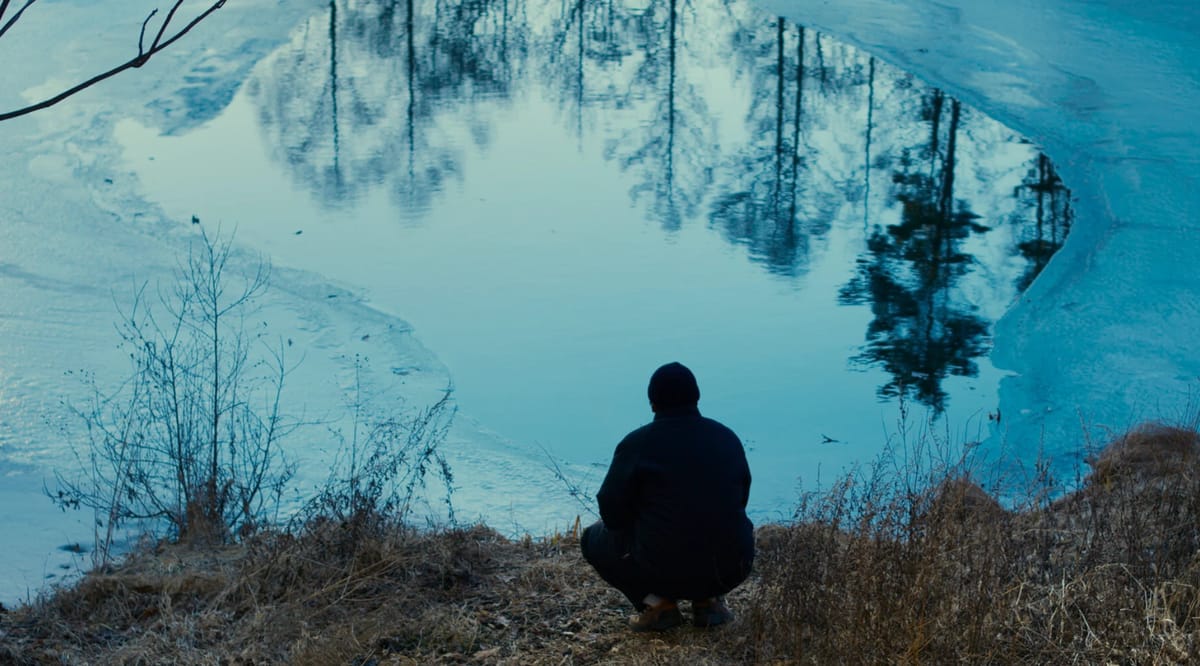
Evil Does Not Exist begins and ends with the same image: an extended shot tracking through a forest staring up at the treetops and the solid sky above. The opening shot occurs in daylight, but by the end night has fallen and we are still racing through the woods seeing nothing but trees and sky as darkness engulfs us. The two images are a good encapsulation of what watching the film feels like: wandering through the woods in search of some signpost, something to help you tell one way from another, but only getting lost deeper and deeper in the thicket as light abandons you.
The film which released last year comes from Japanese director Ryûsuke Hamaguchi as the follow up to his much-acclaimed 2021 drama Drive My Car. On the surface, it’s a straightforward tale of environmentalism’s battle against capitalism. We are situated in a small mountain town a couple hours’ drive from Tokyo, where the spring water is pure and the forest calm. A TV talent agency has bought a parcel of land in the area and intends to develop it into a “glamping” site – the word is a portmanteau of “glamorous camping” – to be a comfortable getaway for city folk. The villagers have issues with the proposal, in particular that the septic tank is underpowered, poorly located, and will lead to tourists’ waste contaminating the water supply. But the company can’t be bothered to significantly revise its plan; they need to start construction within the next few months in order to take advantage of pandemic subsidies.
Such a premise suggests a bitter battle between virtuous, responsible villagers and greedy capitalists eager to maximize profit no matter the environmental consequences. But Evil Does Not Exist refuses to frame its conflict in such simple terms. At the center of the film is a 20-minute scene of a community meeting where agency representatives present their plan and the villagers grill them on every aspect of it, with the hapless representatives unable to give any satisfactory responses. But the rest of the film is a sparse, poetic meditation, observing its characters’ quotidian lives with a gentle realism. The first 25 minutes of the film are spent mostly in silence following local odd-job man Takumi (Hitoshi Omika) and he chops wood, gathers water from the spring, and walks through the woods with his daughter helping her identify types of trees. The film does not pry into its characters’ psychologies or seek to put them into contrived conflicts. It is content to just observe, to attune itself to their unglamorous existence.
There is perhaps a temptation to take this style as a depiction of the peaceful lifestyle threatened by capitalist encroachment, but again the film refuses to draw a clear dichotomy. After the community meeting, we follow the company representatives (Ryuji Kosaka and Ayaka Shibutani) as they return to Tokyo to report to their boss, who directs them to return to the village and try to appease Takumi directly by offering him a job as site caretaker. But even as the film shifts away from the rural village for a bit, its style does not change. We get another lengthy, observational scene with the two as they make the drive back up to the mountains, where they chat about the minutiae of their own lives, and how they’re miles away from where they thought their careers would take them when they got into show business. They come off every bit as human and ordinary as the villagers they’re supposed to coax into going along with their boss’s plan.
This post is for subscribers only
Subscribe now and have access to all our stories, enjoy exclusive content and stay up to date with constant updates.
Already a member? Sign in
